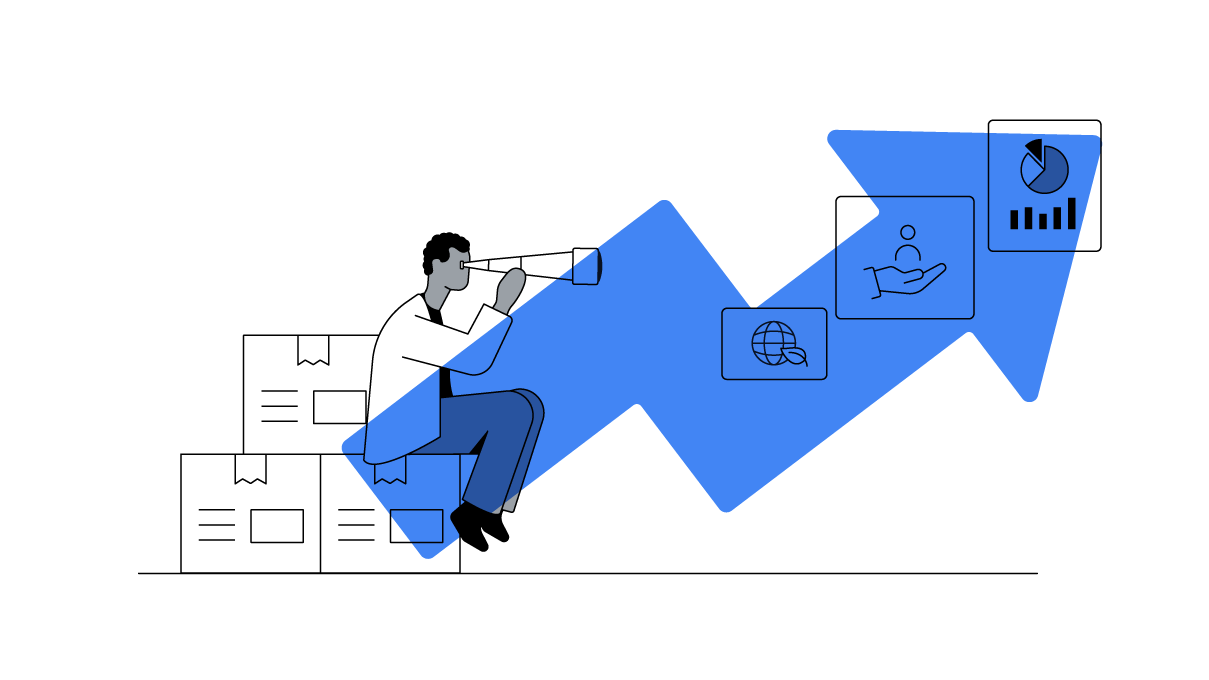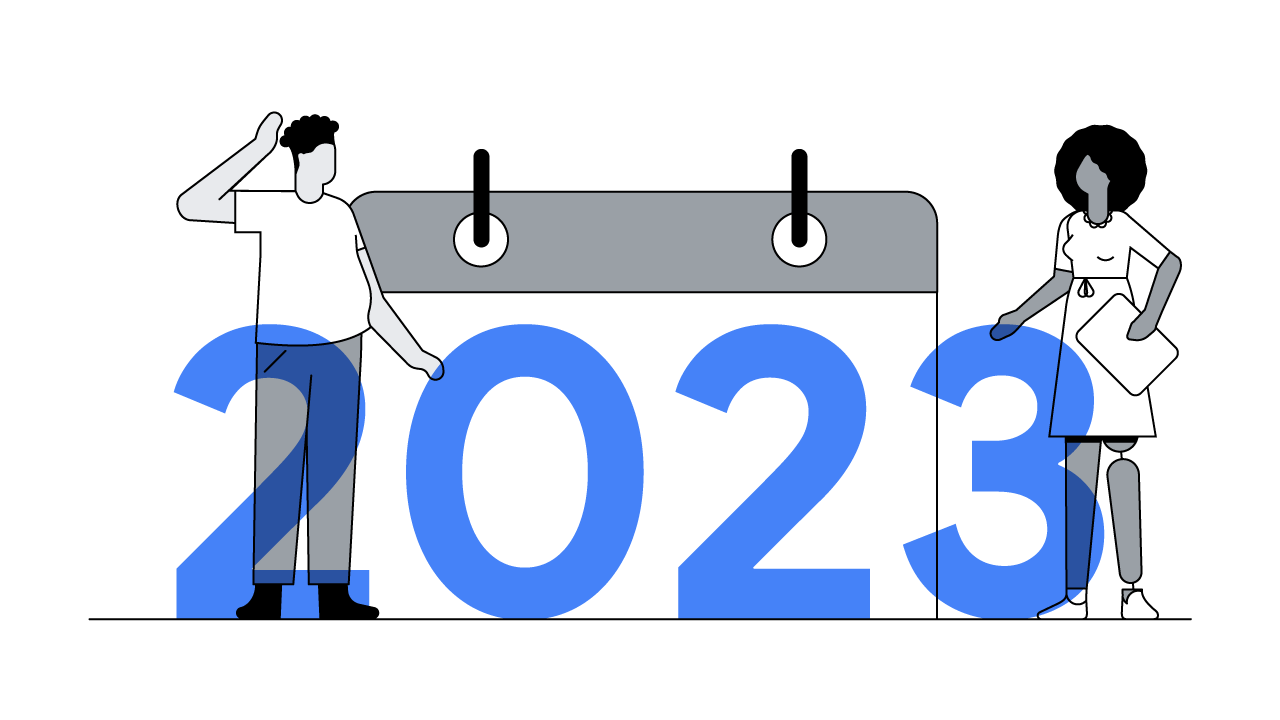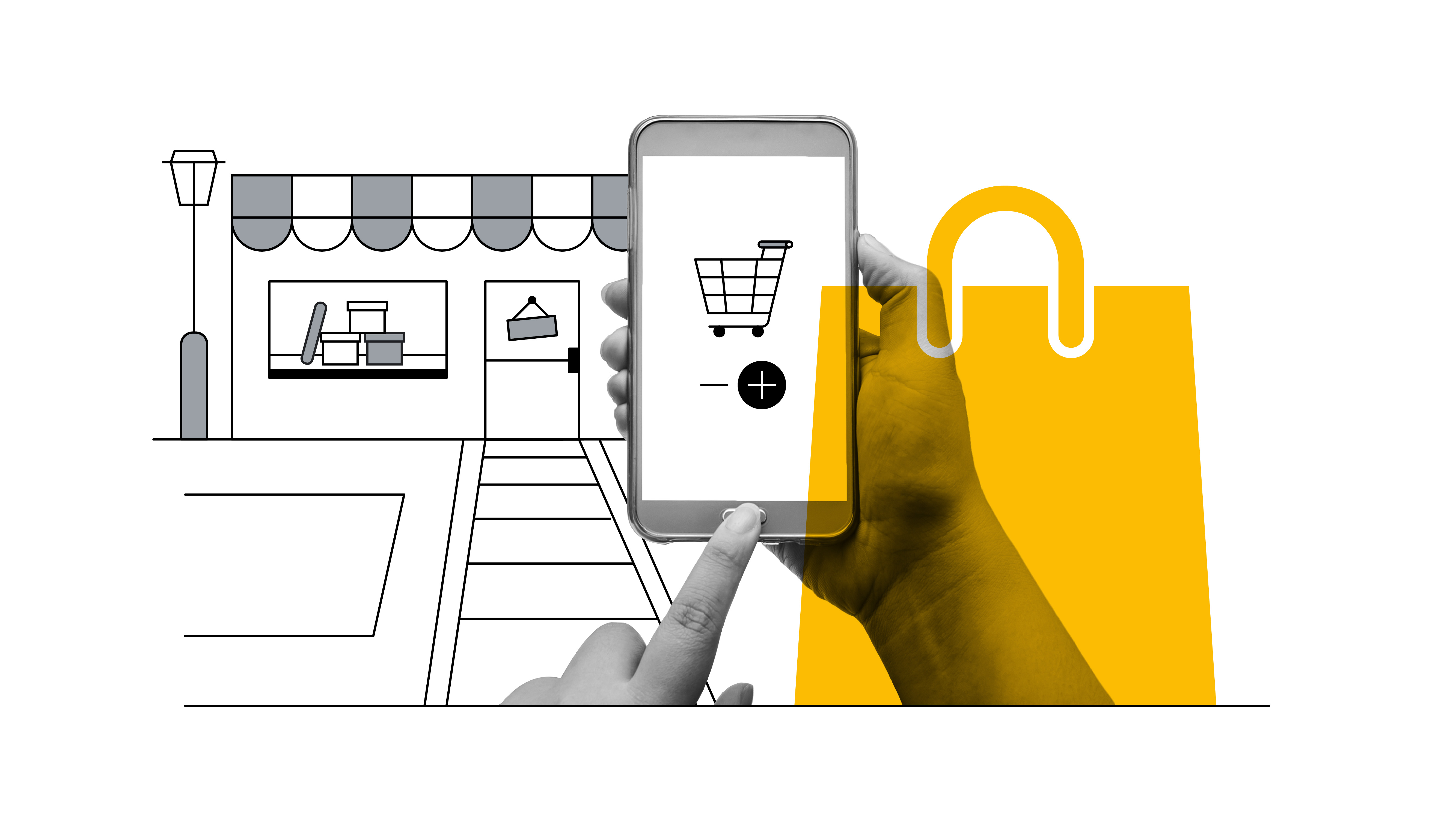
Customer traffic — both physical and digital — powers the engine of retail. In the post-pandemic world, it’s a priority for retailers to get that traffic moving in order to drive sales.
In the past year, traffic to British retail locations dried up as stores were forced to close. In-store revenue dropped by nearly 25% among non-grocery retailers.1 Meanwhile, consumer savings boomed, with the U.K. population amassing excess savings equivalent to 10% of GDP, or more than $300 billion (£215 billion). Now, as we look towards a post-pandemic future with shifting customer demands, retailers must consider how to effectively bring shoppers back into stores, keep online traffic moving, and unleash pent-up demand.
New retail insights with Marketing Mix Modelling
New research we’ve conducted at Google examines how advertisers can most effectively drive traffic to their online and offline properties. We found the key factor directing traffic to online stores is very different to the one driving traffic to physical shops:
- Marketing is the overriding factor we found that drives online traffic to retail websites.
- Physical store location plays a key role in driving in-person footfall.
Our findings are based on Marketing Mix Modelling (MMM) research, alongside psychological complexity filtering analysis. Our MMM work was conducted with more than 20 leading retailers across Europe, the Middle East, and Africa, operating in categories including electronics, apparel, and groceries. This MMM research over the last five years allowed us to isolate the incremental impact of marketing investments. We uncovered insights to help brands refine their marketing approach in a post-pandemic future.
The psychology driving online retail traffic
Shoppers say convenience is a crucial consideration when they decide whether to buy online or in-store.2 The meaning of convenience is different depending on the person and situation. In the physical world, convenience can mean a nearby store location. In the digital world, convenience can mean a consumer can easily recall a brand that will satisfy their online retail needs, and they can smoothly navigate the website.
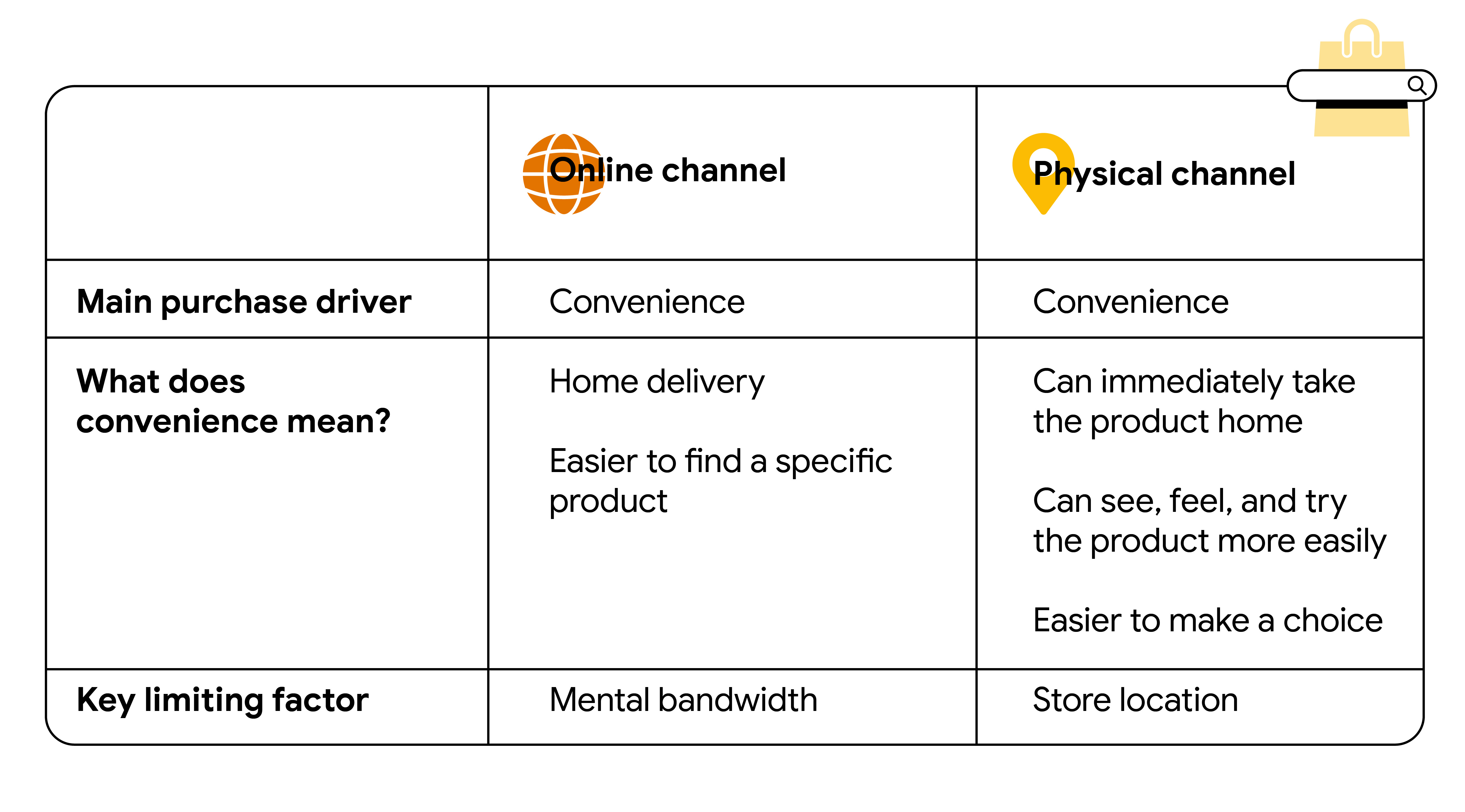
Those who choose digital channels say it’s easier to find products online and they enjoy the convenience of home delivery. Unfortunately, consumers have limited mental bandwidth to process seemingly infinite online options, which means they tend to stick to purchasing from just a few top-of-mind retailers. We’ve found consumers typically use just three online stores despite being aware of 13.
Consumers have limited mental bandwidth ... which means they tend to stick to purchasing from just a few top-of-mind retailers.
Marketing for mindspace: How to stay top of mind
Online retail powerhouses reach their prime market position by using advertising to get noticed and stay top of mind.
Our MMM research with omnichannel retailers demonstrates the importance of marketing investment for online success. We found their website traffic and sales are 1.5X to 3.5X more dependent on marketing investment than their physical locations.3 For example, when examining a large electronics retailer, we found that advertising drove 60% of the firm’s online traffic and 27% of its in-store traffic.4 A similar story plays out with other retailers. On average, 51% of online traffic and digital sales are driven by marketing investment.5
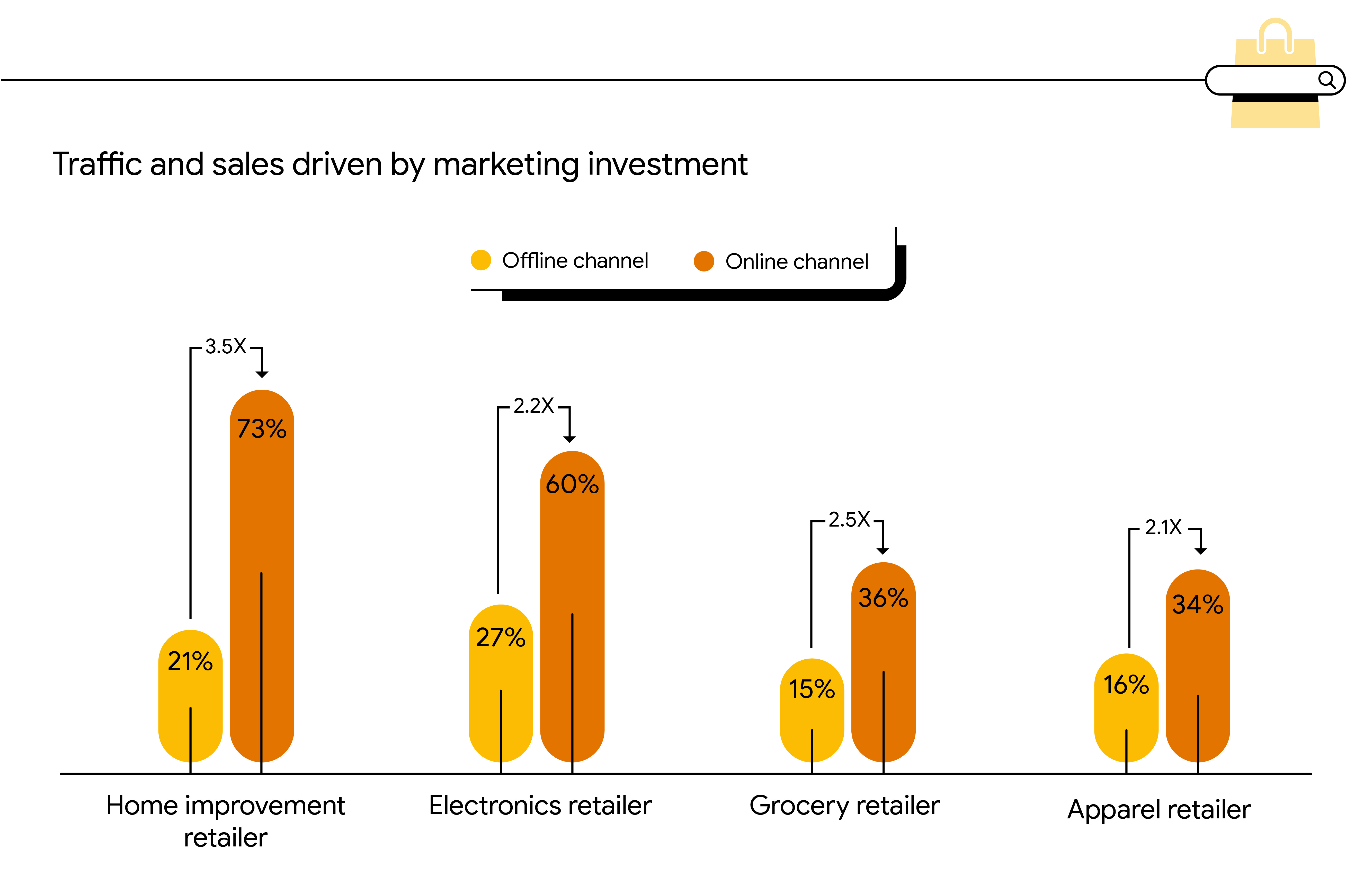
A key consideration to drive traffic to your online site is consistent advertising. The average consumer can easily see thousands of ads in a day; a single ad may not cut through the clutter. A constant presence can keep your brand top of mind.
Additionally, ads placed at the right time, when a customer is considering a purchase, are crucial. Recent Google research shows that simply showing up while consumers are considering a purchase can convince between 18% to 44% of consumers to shift from their first choice brand to a second choice. This is when automated advertising solutions are especially valuable, by getting the right ad to the right person at the right time.
Advertising doesn’t need to be solely online to drive digital sales; offline media also drives digital traffic and online ads can drive in-store footfall. The crucial finding is that online channels depend more heavily on advertising to drive traffic than in-store channels.
The crucial finding is that online channels depend more heavily on advertising to drive traffic than in-store channels.
The psychology driving in-store traffic
We know convenience is crucial in retail. In our post-pandemic future, with shoppers going back into stores, retailers will need convenient locations to drive traffic. Location is key. Still, our research shows marketing can continue to play an important role in getting people into these shops.
Marketing for footfall: Considerations to drive in-store traffic
Traditionally, paper catalogues and flyers are deployed to encourage local traffic. While they can be effective in driving footfall, our research found these options deliver a lower return on investment compared to digital alternatives. We found that search engine marketing is a particularly effective driver of in-store traffic, along with social. External research has shown at least 50% of revenues generated by search and social media are captured in-store. Like legacy paper-based options, search and social marketing can engage shoppers in specified neighbourhoods and regions. Plus, both digital options can show consumers customised results, based on their personal interests and what they are looking for.
Our research with dozens of retailers found that they invest an average of 14% of their marketing spend on paid search, and it delivers 24% of their media-driven revenues.6 This indicates the effectiveness of the search marketing channel and highlights the possibility that many businesses may be under-investing in this area.
A note for small businesses: search engines have been shown to drive 17% more traffic to small and medium-sized retailers than their large competitors, on average. In fact, about four out of 10 visits to small and medium-sized retailers can be attributed to online search.
Mapping your traffic strategy
There’s no silver bullet to drive traffic to your online and physical locations. Every retailer is different and each situation is unique. But in a post-pandemic world, these are some guiding principles every brand can use:
- Think of channels in an integrated way: Offline media drives digital traffic, and online media drives physical traffic. It’s not useful to think that online advertising only drives online traffic, or billboards may only drive physical traffic.
- Your e-commerce channel needs marketing investment to thrive: Consistent advertising will help your brand break through the mental clutter and stay top-of-mind. Brands that want to ensure a constant flow of online traffic should consider doubling-down on their advertising.
- Use automated solutions to effectively reach your customers: A single well-placed ad can secure a sale. Getting your ad in front of the right person at the right time requires automation. Ensure you’re using automated solutions to their full potential to reach your customers.
- Reconsider legacy investments: Our research has shown leaflets and brochures provide a relatively low return on investment, whereas digital channels such as search and social marketing provide an efficient way of capturing consumers attention and driving in-store traffic.
The pandemic isn’t over yet. But there’s light at the end of the tunnel. The so-called ‘new normal’ will bring many changes, including new consumer preferences, new purchasing habits, and new opportunities for retailers to promote themselves and attract shoppers. Now could be the moment to rethink and refine your approach to ensure you’re effectively driving customer traffic — both online and offline.




